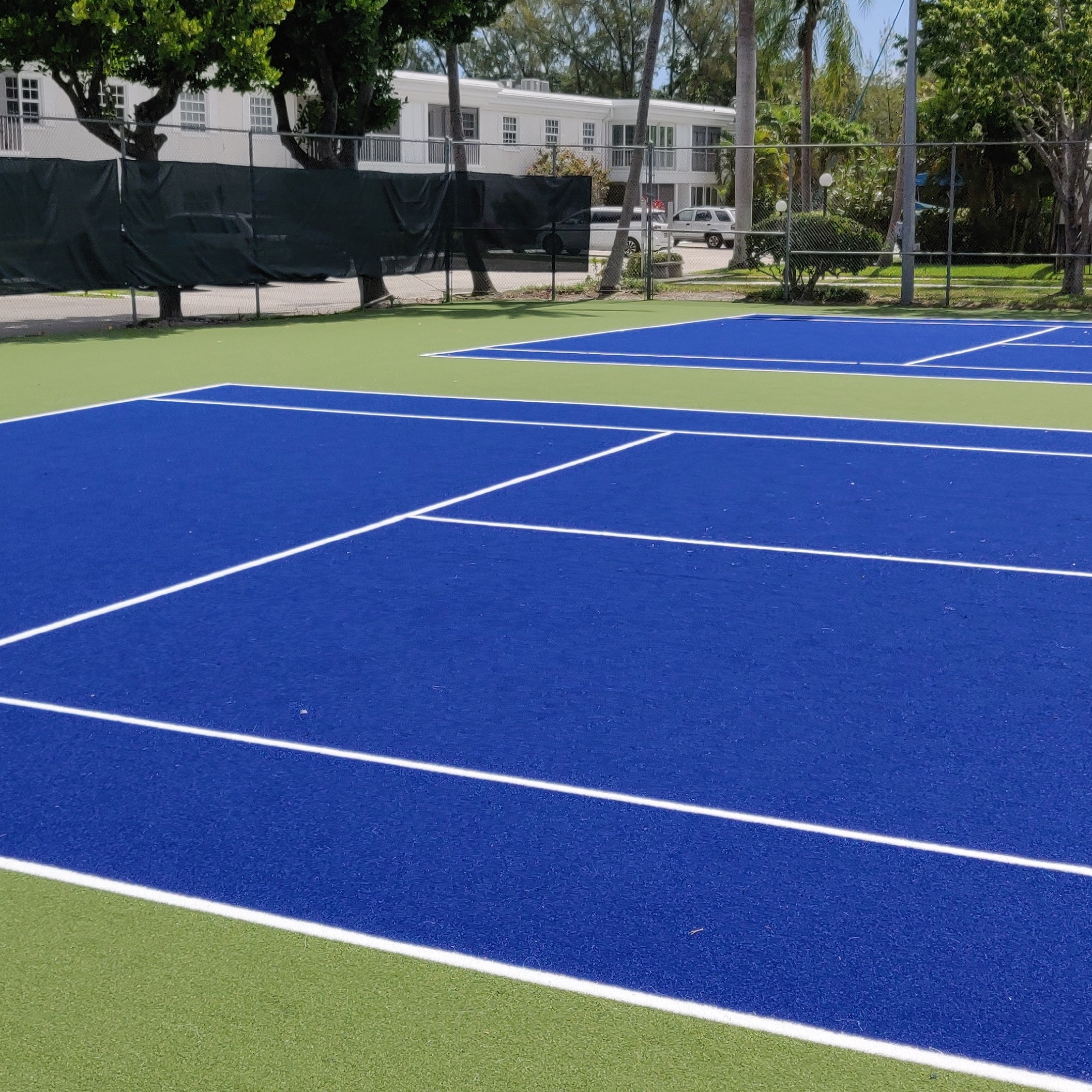
The use of synthetic turf on sports fields has decreased injuries. Synthetic turf is changing sports fields worldwide. It performs well and is very useful. The market for artificial sports turf may grow to $5 billion by 2033. Football fields make up 35.4% of this market. On synthetic turf, there are 15.26 injuries per 1000 hours. On grass, there are 23.08 injuries per 1000 hours. These changes help sports by giving strong, affordable, and safe options. Athletes can play in any weather with consistent results.
Artificial turf has improved a lot since it was created. Early designs started the now successful industry. The first turf used nylon and polypropylene to look like grass. These early types were simple but worked well as a strong grass substitute. Later, sand infills were added in the second generation for better stability. By the third generation, materials like crumb rubber, cork, and coir made it better for sports. The fourth generation mixed sand and rubber for stronger turf. The fifth and sixth generations improved crumb rubber for top performance.
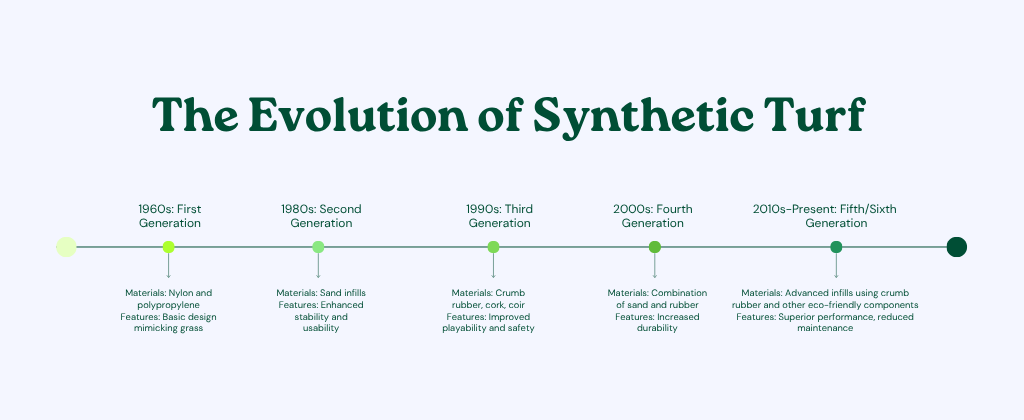
These changes led to today’s modern turf, which keeps improving with new technology.
Modern turf has grown thanks to new technologies. Materials like polyethylene and nylon make it last longer and handle weather better. This also lowers upkeep costs. Infill materials, like silica sand and crumb rubber, add cushioning and safety for players. Smart turf with sensors collects data to keep turf in good shape. Eco-friendly options, like biodegradable turf, help the environment while staying high-quality.
| Advancements in Synthetic Turf Technology | Impact on Performance and R&D Investments |
|---|---|
| Advanced materials (polyethylene, nylon) | Stronger, weatherproof, and less upkeep needed |
| Infill materials (silica sand, crumb rubber) | Safer for players with better cushioning |
| Smart technologies (embedded sensors) | Tracks turf condition and reduces maintenance |
| Sustainable solutions (biodegradable turf) | Eco-friendly while keeping great performance |
| R&D investments | Creates better, greener, high-performing turf |
These updates have made turf better and more popular for sports fields worldwide.
Synthetic turf is now widely used in many sports. Soccer and football fields were the first to use it because it lasts long and performs well. Tennis and hockey courts also use it since it handles heavy use. Rugby fields and multi-sport complexes like it for being versatile and easy to care for. Beyond pro sports, it’s used in parks and community areas. It’s a great choice for cities where grass doesn’t grow well.
The global turf market shows how popular it is. By 2031, it could be worth $19.58 billion, growing 19.5% yearly from 2024 to 2031. This growth comes from eco-friendly ideas and saving water, especially in cities.
Synthetic turf saves both time and money. Unlike real grass, it doesn’t need watering, mowing, or fertilizing. You won’t need costly lawn tools or spend hours on care.
💡 Tip: Using synthetic turf can cut maintenance costs by 70% compared to natural grass.
Here’s a 10-year cost comparison:
| Factor | Natural Grass (10-year cost) | Synthetic Turf (10-year cost) |
|---|---|---|
| Installation | $1-$2/sq ft | $8-$12/sq ft |
| Water | $4-$8/sq ft | $0.05-$0.10/sq ft |
| Maintenance | $12-$18/sq ft | $2-$4/sq ft |
| Replacement/Repair | $1-$3/sq ft | $0-$1/sq ft |
| Total | $18-$31/sq ft | $10-$17/sq ft |
Synthetic turf uses much less water. It only needs about 720 gallons yearly for cleaning. Natural grass, however, uses 55,000 gallons. This 98% water savings makes synthetic turf eco-friendly for sports and recreation areas.
Synthetic turf is very durable. Strong materials like nylon and polyethylene help it handle heavy use and bad weather. A good installation can last 10 to 20 years, and some even longer.
Several things affect how long turf lasts:
Cleaning and regular checks keep turf looking and working well. Professional installation and proper care also help it last longer.
Synthetic turf works well in any weather. Unlike grass, it doesn’t get muddy in rain or dry out in heat. It stays the same all year, making it great for sports fields.
It can handle heavy use and tough weather. Schools, parks, and sports teams like its durability. FIFA even approves modern synthetic turf for its weather resistance. This ensures fields stay usable in all climates.
🌟 Note: Synthetic turf gives you a dependable field for sports, no matter the weather.
Synthetic turf provides many safety benefits for athletes. It is designed to prevent injuries and ensure steady performance, letting players feel secure.
Modern turf includes soft layers and special infill materials. These reduce the impact from falls or collisions. This helps lower the chances of cuts and bruises, especially in sports like football and rugby. Synthetic turf stays smooth and avoids hazards like holes or uneven spots, which are common on natural grass.
🛡️ Note: The even surface of synthetic turf lowers tripping risks, making it safer for all players.
Still, some risks exist with artificial turf. A study of 17,549 football players showed that ground-contact concussions were worse on turf than on grass. This shows why good padding and shock-absorbing materials are important.
Heat is another safety concern. On hot days, turf can get very hot, reaching up to 166°F. This can cause heat-related health problems. To fix this, companies are creating cooling systems and heat-resistant materials to keep turf safe.
Ankle injuries are also a problem. Research on 2,020 young female soccer players found more ankle sprains on turf. The rate was 1.5 per 1000 hours on turf compared to 0.8 on grass. New infill materials and designs aim to reduce joint strain and improve safety.
Synthetic turf keeps improving to make sports safer. With new technology, players can expect better surfaces that focus on their health.
Synthetic turf has changed sports fields and athletic spaces worldwide. It is strong and flexible, making it great for many sports. Let’s see how synthetic turf improves soccer, football, tennis, hockey, rugby, and multi-sport fields.
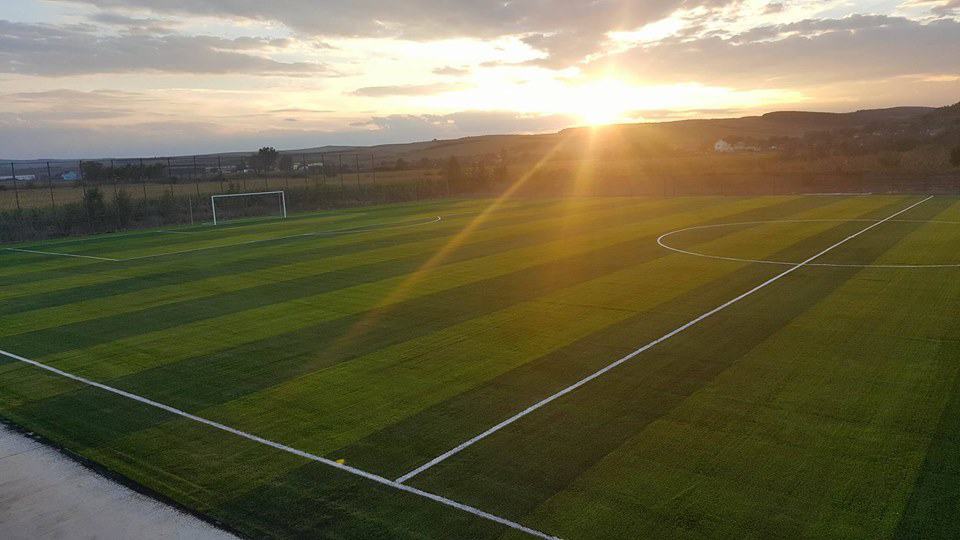
Synthetic turf is a big improvement for soccer and football fields. It works well in all weather and costs less to maintain. Certified turf, like FIFA-approved surfaces, offers better shock absorption and friction for top-level play.
These features make synthetic turf popular for soccer and football teams. It handles heavy use and gives athletes a safe, reliable surface to play their best.
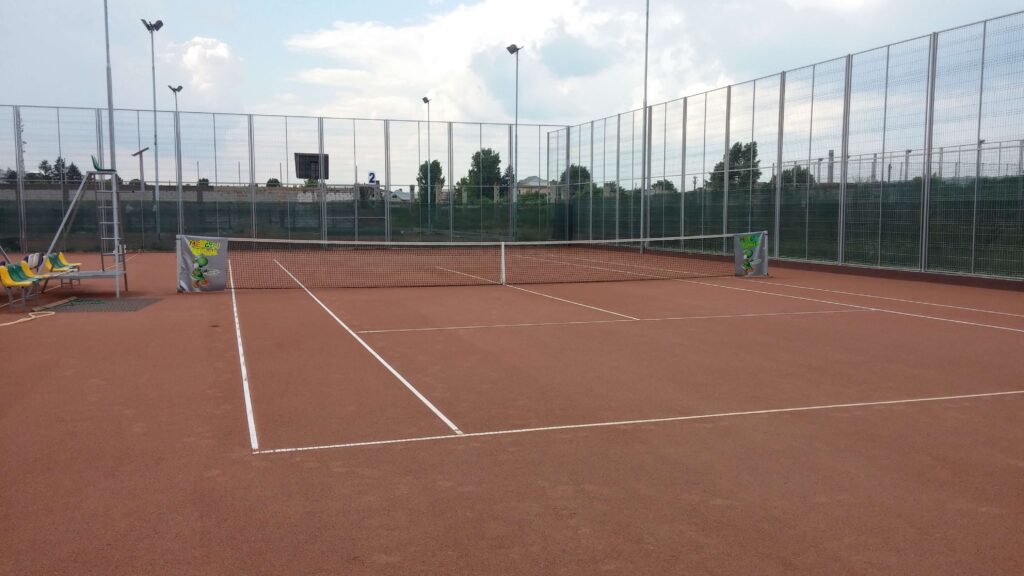
Tennis and hockey also use synthetic turf for better performance. AstroTurf changed these sports, making it common for indoor and outdoor courts.
Synthetic turf improves speed and accuracy while lowering injury risks. Its durability and easy care make it perfect for tennis and hockey events.
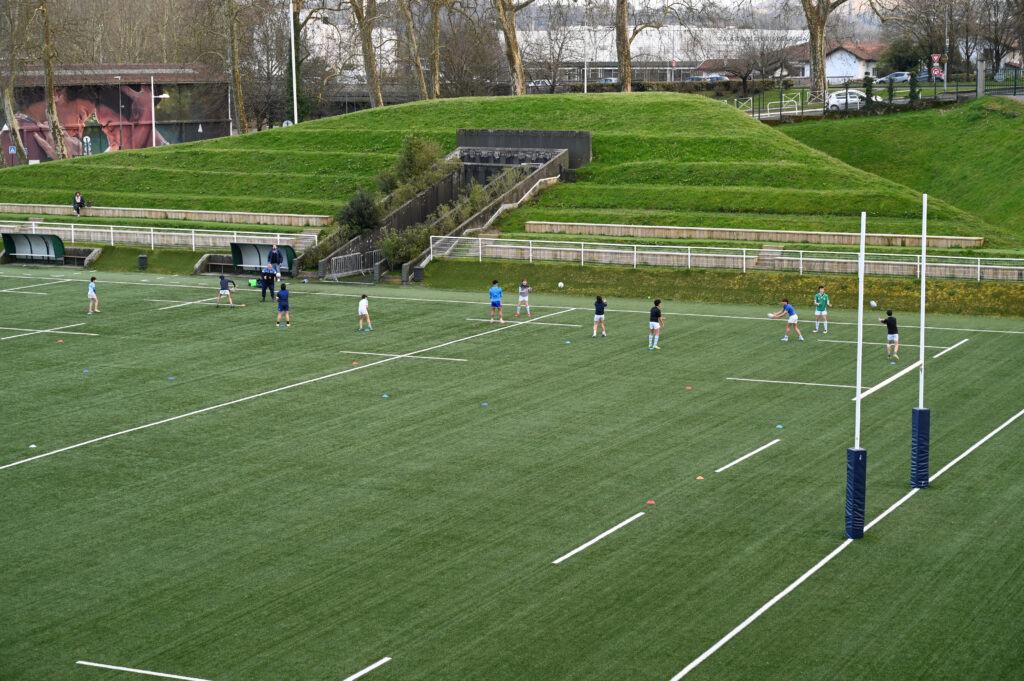
Rugby fields and shared sports facilities benefit from synthetic turf. It lets different sports use the same field without losing quality.
| Statistic | Value |
|---|---|
| Division II teams sharing fields | 94% |
| Division III teams sharing fields | 80% |
| Division I teams sharing fields | 14% |
| NCAA programs maintaining grass fields | 3 |
Synthetic turf allows fields to host rugby, soccer, and football together. This saves money and space, especially in crowded cities. It also provides a steady surface for fair play and fewer injuries.
Multi-use turf facilities with synthetic turf are changing sports fields. They offer a cost-saving, eco-friendly option for schools and communities, making sports easier for everyone to enjoy.
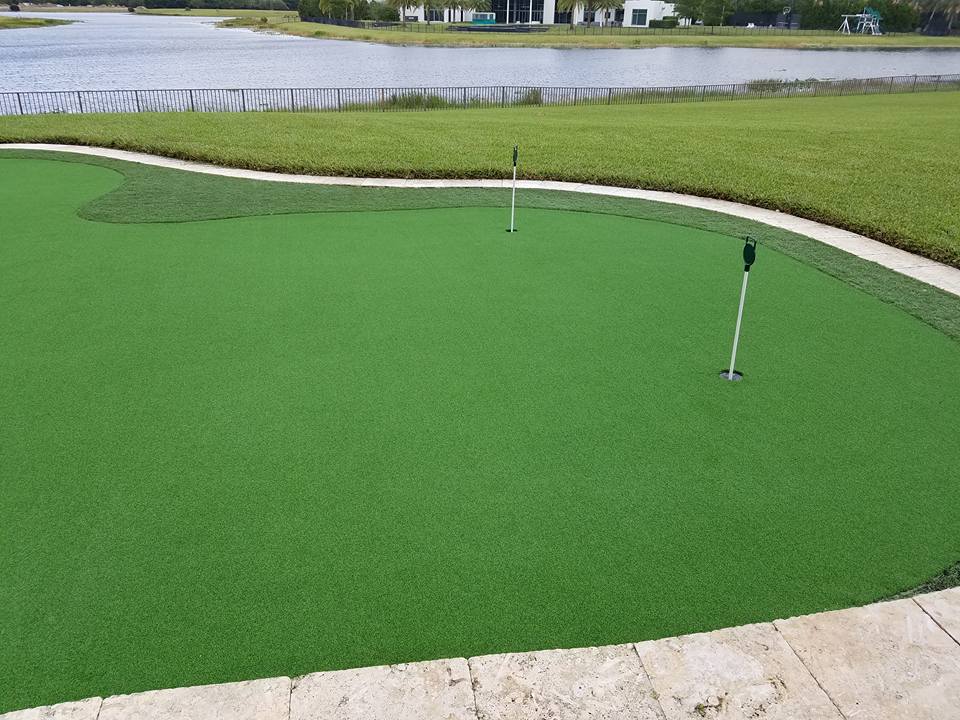
Synthetic turf has changed parks and community areas. It works well where grass doesn’t grow easily. You’ll see it in playgrounds, parks, and centers. It’s tough and great for many activities.
🌱 Note: Synthetic turf doesn’t need water, making it great for dry areas.
There are many reasons why synthetic turf is a good choice:
Synthetic turf is becoming more common in community spaces. Here’s why people like it:
Synthetic turf is great for spaces used for many things. These areas are perfect for cities with little room. They host soccer, football, rugby, and events.
| Feature | How It Helps Communities |
|---|---|
| Versatility | Used for sports and other events |
| Cost-Effectiveness | Lowers upkeep costs |
| Space Efficiency | Makes the most of small areas |
These spaces bring people together by offering fun and safe places. They let everyone enjoy sports and outdoor fun.
🏟️ Tip: Adding synthetic turf can turn empty spots into busy community areas.
Synthetic turf keeps improving parks and recreation. It’s a smart, eco-friendly choice for everyone to enjoy.
Big sports groups now use synthetic turf for its benefits. It’s common on soccer, football, and golf fields, helping players stay safe and play better. Rugby and hockey leagues also like it because it lasts through tough games.
Governments and private companies are spending more on sports facilities. This increases the use of synthetic turf. New technology has made turf softer and safer, lowering injury risks.
| Where It’s Used | Key Changes |
|---|---|
| Sports Fields | More use in soccer, football, and golf for safety and performance. |
| Playgrounds and Parks | Focus on safe, colorful, and strong play areas for kids. |
| Cities and Homes | Growing use in yards and urban areas to save water. |
| Asia-Pacific Region | High demand in cities for parks and sports spaces. |
| LAMEA Region | More turf in dry areas for landscaping and sports. |
This trend shows how synthetic turf is improving sports and recreation worldwide.
Climate change makes people look for eco-friendly sports field options. Synthetic turf works well in places with bad weather. For example, Sydney uses it to stop fields from flooding during heavy rain. These fields last longer and handle more games, making them great for today’s sports needs.
Synthetic turf saves resources too. It uses less water, fertilizer, and pesticides than grass. This makes it a smart choice for areas with little water or tough weather.
But recycling synthetic turf is still a problem. Many people want better ways to recycle it. Fixing this issue is important for making turf even more eco-friendly.
Cities are growing, so there’s less space for sports. Synthetic turf helps solve this problem. In the U.S., there are about 13,000 turf fields, with 1,500 added each year. By 2025, this number could almost double.
Turf lets people play longer and stay safe, even in crowded areas. It’s easy to care for and saves water, which is good for the environment.
As cities expand, turf turns empty spots into busy sports areas. This helps communities enjoy sports and outdoor fun, even in tight spaces.
New technology has made artificial turf better for sports and recreation. These updates focus on making turf stronger, safer, and eco-friendly. Synthetic turf is now a smart choice for modern sports fields.
Recent changes have added useful features to synthetic turf. Advanced drainage systems stop water from pooling, keeping fields dry for games. Cooling systems lower heat, making turf comfortable in hot weather. These upgrades make turf look more like real grass while performing better.
Here’s a breakdown of key improvements in turf design:
| Innovation Type | Description |
|---|---|
| EnviroLoc+ Backing System | Special backing with soybean fibers drains water fast (up to 90 inches/hour). |
| Durability Improvements | Stronger turf resists damage and stays stable, like natural grass. |
| Thermal Protection Shield | Stops fibers from overheating and reduces heat damage. |
| Environmental Impact Reduction | Uses recyclable materials and bio-based polymers for longer use and less waste. |
These features make synthetic turf tough, safe, and better for the planet.
Modern turf uses advanced materials to improve its quality. Some features include:
These materials make synthetic turf dependable for sports fields, offering safety and steady performance.
Technology keeps improving artificial turf design. With these updates, fields are now stronger, greener, and more attractive.
Synthetic turf saves money over time for sports fields. It costs more to install than grass but needs less care. You don’t have to mow, water, or use pest control like with grass.
💡 Fact: Grass fields cost about one-third of synthetic turf over 20 years because artificial fields need replacing and disposal.
Synthetic turf still needs some upkeep. You may need to refill infill, fix drainage, or clean it. Communities should compare the total costs of both options before deciding. Improving grass fields with better drainage can also be a good choice in some places.
Saving water is a big advantage of synthetic turf. Grass needs regular watering, but artificial turf uses almost none. It only needs a little water for cleaning sometimes. This makes it great for areas with little water.
| Description | Water Use (Gallons/Year per sq. meter) |
|---|---|
| Natural Grass | 55 |
| Synthetic Turf | 0-1 (For cleaning) |
Switching to synthetic turf helps save water and protect this resource. This is especially helpful in dry areas or cities where saving water is important.
Modern synthetic turf is made with recycling and eco-friendly methods in mind. Companies like FieldTurf aim to send no waste to landfills by 2025. Their turf can be fully recycled, and they reuse old infill to match new quality.
| Certification | What It Ensures |
|---|---|
| FloorScore | Low VOCs, tested by California standards. |
| EPA Compliance | Meets EPA rules for safety. |
| CPSIA Compliance | Follows child safety laws. |
| REACH | Meets EU chemical safety rules. |
| RoHS | Limits harmful substances in products. |
Programs like Plastics4Purpose™ turn hard-to-recycle plastics into strong materials. The Infill Take Back Program collects and reuses old infill. These efforts show the industry’s focus on reducing waste and helping the planet.
Synthetic turf keeps improving as a green choice for sports fields. It combines strength with eco-friendly practices. By choosing it, you support solutions that are good for both performance and the environment.
Synthetic turf has improved sports fields but also causes problems. One big issue is microplastics. As turf wears down, it releases tiny plastic pieces. These can harm soil, pollute water, and affect wildlife. Studies show that crumb rubber, often used in turf, adds to this pollution. It makes up 12% to 50% of all microplastics found in nature.
The European Union plans to ban crumb rubber infill by 2031. This will help lower the environmental damage from synthetic turf. Reports from experts show rubber particles spread to nearby areas, adding to pollution. These facts show the need for better ways to stop this problem.
Manufacturers are working on new ideas to fix this. Some are creating turf that can break down naturally or be recycled. These changes aim to make turf safer for the planet while still working well for sports.
You can help by choosing turf made from recyclable materials. Supporting eco-friendly projects also helps reduce microplastics. As more people learn about this issue, turf designs will likely focus on being both useful and green.
🌱 Tip: Pick turf made with eco-friendly materials to protect nature.
Synthetic turf keeps improving with better materials and designs. Companies now focus on eco-friendly options that last longer and work well. One example is polylactic acid (PLA) fiber, which is strong and better for the environment. Cooling systems like Hydrochill® make turf cooler during hot days. Geofill, made from natural materials, looks like soil and is easy to care for.
Other updates include K9 Sand, which drains water well for pet areas, and Creaturf, which uses special printing for bright colors and clear designs. These changes make synthetic turf useful for many purposes.
The global market for artificial turf shows this progress. It is expected to grow from $3.49 billion in 2024 to $6.34 billion by 2034, with a yearly growth rate of 6.1%. This shows more people want better and greener turf options.
Smart technology is making synthetic turf more advanced. Sensors are added to check things like temperature, moisture, and wear. This information helps keep the turf in good shape and safe for players.
New methods also study bacteria on turf to make it safer and stronger. Smart turf systems lower upkeep costs and help the turf last longer.
With these features, synthetic turf becomes more than just a field. It turns into a smart system that improves sports and makes maintenance easier.
Synthetic turf is now used in more places than just sports fields. It’s found in homes, parks, and even hotels and airports. Schools and sports clubs like it because it’s easy to care for and works all year.
Cities use synthetic turf to improve public sports areas and encourage healthy activities. In neighborhoods, it creates fun spaces for people to enjoy. Public places use it to look better and attract more visitors.
| Where It’s Used | Why People Like It |
|---|---|
| Sports Clubs | Strong surfaces, low care costs, and year-round use. |
| Schools | Affordable fields for many sports and fitness programs. |
| Homes | Easy landscaping and fun spaces for families. |
| Parks and Recreation Areas | Better looks and more outdoor activities for communities. |
| Cities | Improved sports areas and support for healthy living. |
These new uses show how synthetic turf fits many needs, making it a smart choice for modern spaces.
Hybrid turf mixes natural grass with synthetic fibers for better sports fields. It keeps the look of real grass while adding strength. You’ll see hybrid turf in stadiums, parks, and community spaces.
Hybrid turf uses synthetic fibers to support natural grass. These fibers make the grass stronger and last longer. The grass grows through the synthetic layer, blending both materials. This mix keeps the field green and tough for heavy use.
🌱 Did You Know? Hybrid turf fields can be used three times more than regular grass without wearing out.
Hybrid turf has many benefits for sports and recreation:
| Feature | How It Helps Users |
|---|---|
| Strong Durability | Handles heavy use without damage |
| Improved Drainage | Keeps fields ready after rainfall |
| Natural Appearance | Looks like real grass |
Hybrid turf is a smart choice for sports fields. It combines the best of natural grass and synthetic turf, giving athletes and communities a safe and reliable surface to play on.
Synthetic turf has changed sports fields all over the world. It is strong, easy to care for, and works well every time. It saves water and handles different weather, making it a smart choice. Many places now use it because it improves sports fields everywhere. New ideas keep making it better, helping athletes and communities enjoy safe and lasting fields.
🌟 Note: Synthetic turf gives steady playing surfaces, letting athletes play well in any weather.
Synthetic turf uses materials like polyethylene, polypropylene, or nylon. These fibers look and feel like real grass. Infill, such as silica sand or crumb rubber, adds softness and support. Some newer types use eco-friendly or recyclable parts to help the environment.
Synthetic turf can last 10 to 20 years. Its lifespan depends on how often it’s used, the material quality, and care. Cleaning and checking it regularly can make it last longer and stay safe for sports and play.
Yes, synthetic turf is built to keep athletes safe. It has soft layers and smooth surfaces to lower injury risks. New designs also reduce heat and joint strain, making it a good choice for players.
Yes! Synthetic turf works well in any weather. It doesn’t get muddy in rain or dry out in heat. Special drainage systems keep it ready to use even after heavy rain, so it’s great all year.
Yes, but it’s much easier than caring for grass. You’ll need to clean off dirt, brush the fibers, and refill the infill sometimes. These simple tasks keep the turf looking good and working well.
🌟 Tip: Take care of your synthetic turf to make it last longer.
